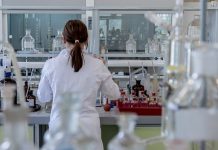November 2002 - Whether after-school hours filled with study, exercise and nutritious snacks can help turn around unprecedented obesity rates in children is the focus of a new study at the Medical College of Georgia.
"We live in an environment that tends to generate obesity," Dr. Bernard Gutin, exercise physiologist at the MCG Georgia Prevention Institute, said of today�s sedentary, fast-food world.
Dr. Gutin is principal investigator on a $3.3 million grant from the National Institutes of Health to determine if the MCG Fitkid Project can change the afternoon environment from one the researchers call "obesogenic" to one that�s "fitogenic." Dr. Zenong Yin, exercise scientist, is co-principal investigator.
"Nobody has yet demonstrated that if you change the environment the way we will in our study that the children will do more exercise, improve their diets and become less fat. We don�t know it, but we suspect it," said Dr. Gutin, who has studied the impact of physical activity on fitness and fatness for about 30 years.
"But we do know we have this pattern where kids are just progressively getting fatter and fatter with all the health problems that tend to come after," Dr. Gutin said. "We want to know if we can stop this from occurring through this type of environmental approach. If we can, then school systems and communities throughout the country might be encouraged to try something like it."
Continue Reading Below ↓↓↓
The FitKid Project will change the afternoon environment for about 300 third-graders in nine Richmond County schools for three years. An equal number of third-graders in nine other schools will be enrolled as controls. A much smaller pilot study will focus on two schools to refine techniques for the larger study.
Numerous GPI studies examining the role of physical activity on fitness and fatness have provided good information about the types of activities children enjoy and expend a lot of energy doing.
Every day after school, the children will have a period of warm-up and skill instruction, learning or sharpening age-appropriate fundamentals such as dribbling a basketball, Dr.Yin said. Next the children will move into 30 to 40 minutes of aerobic activity using game formats that keep them moving, followed by strength-training using calisthenics and resistance to build muscle.
They�ll choose from the U.S. Department of Agriculture�s list of healthy snacks and, with the help of Joe Moore, a study consultant who is coordinator for science, health and physical education for the Richmond County Board of Education, get homework assistance and academic enrichment skills.
"We are saying we want this after-school period of time to be the very best for them," Dr. Gutin said. "We hypothesize that the children in the experimental schools will increase less in body fatness than those in the control schools."
To get objective data, researchers will regularly measure the height, weight, cholesterol and blood pressure of active participants and the control group. The children also will take a simplified step test to measure cardiovascular fitness. "The exciting part is we are going to check their actual body fat as well," Dr. Yin said, with the help of a mobile van equipped with a machine using low-dose radiation to accurately measure percentage of body fat compared to muscle and bone. They�ll also keep records of what children eat and psychosocial issues such as their confidence in doing physical activity.
Richmond County teachers will work with GPI faculty and staff in the after-school hours. "The collaboration of the Richmond County School System has been exceptional and is critical to the success of our work," Dr. Gutin said.
"Typically health-promoting programs are designed to change the person," Dr. Yin said. "We teach you why you should exercise, we teach you the skills, then we expect you to exercise. The more recent idea, that we now know is part of the equation, is, if you know all these things, will you be able to do it," he said.
As examples, if the kids don�t have convenient places to exercise, they may not. "In this case, we will provide you with this exercise opportunity right after school so you don�t have to go outside or pay to enroll in a program or walk on a street that is not safe or go home and sit in front of the television and eat unhealthy food," Dr. Yin said. "We provide this environment for you and we hope you will stay here every day. That is the environmental approach."
And environmental approaches to obesity prevention are exactly what the NIH was looking for when it issued the request for applications that got the latest funding for the GPI�s exercise studies.
Continue Reading Below ↓↓↓
Other GPI studies are providing evidence that putting obese kids in similar after-school programs reduces their fatness and that it can help other children avoid obesity. They picked third-graders for the new study because that tends to be the age when physical activity begins to decline and weight starts edging upward.
Dr. Paule Barbeau, exercise physiologist at GPI, and Dr. Donna Moore, MCG pediatrician, are co-investigators on the study.
Source: Medical College of Georgia









